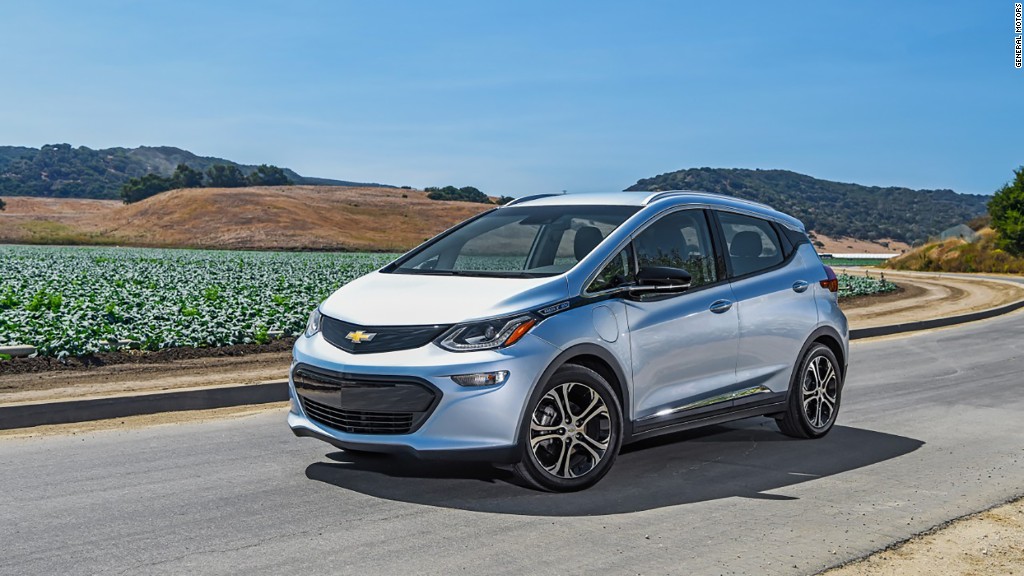
America's automakers are hoping to get the Trump administration to revisit strict fuel economy and emissions requirements laid down by the Obama White House.
Automakers are worried they might not be able to meet long term fuel economy goals because of cheap gas. Low gas prices make it harder for automakers to sell as many of the efficient vehicles as they need to in order to meet the regulations.
That's why a group of 18 automakers, from giants like General Motors (GM) to tiny Aston Martin, sent a letter to the Trump administration late last week asking for a new review of the requirements. They want to make their case to the new regime.
Back in 2012 the industry was charged with attaining what's called Corporate Average Fuel Economy of 54.5 miles per gallon by the year 2025. (In reality, cars won't be averaging anything close to that -- it'll be more like 42 mpg.)
Related: Stocks hit record again. But is Trump the reason?
This unified fuel economy and emissions standard was assembled by three agencies -- the National Highway Traffic Safety Administration, which oversees fuel economy, and the EPA, which regulates vehicle emissions, and the California Air Resources Board, which regulates emissions for California and a number of other states.
These agencies have to work closely together because some emissions -- particularly CO2 -- vary directly depending on how much fuel is burned. That means that the EPA and CARB have to coordinate with NTHSA, which regulates fuel economy, so that their CO2 limits work with NHTSA's fuel economy goals. Otherwise, automakers could be stuck trying to meet incompatible goals.
The Obama plan included a midterm review to assuage industry fears of being locked into potentially unobtainable fuel economy and emissions targets. Starting in 2017, the three agencies were supposed to check in with the industry, look at all the data, and see whether the 2025 goals were still viable.
The EPA, just as the final weeks of the Obama administration were winding down, announced that it had reviewed all the data and that it believed the automakers could meet the goals. The agency made its announcement well before the April 2018 deadline that had been set for that decision.

Many in the industry saw that as a move by the outgoing administration to lock in fuel economy and emissions rules before the Trump team came into office.
"Several times automakers have publicly raised concerns about EPA changing course and rushing through its midterm review following the November election," Gloria Bergquist of the Alliance of Automobile Manufacturers, an industry lobbying group, said in an email.
Related: 8 reasons Andrew Puzder's nomination flamed out
The automakers should be able to get the new review they want, said Kristina Moore, an industry attorney who has worked on fuel economy issues as a congressional staffer. She said there are a number of mechanisms by which the Trump administration, possibly with the help of Congress, could negate the Obama EPA's decision and start over.
But that shouldn't be necessary, insisted Dave Cook, a vehicles analyst with the Union of Concerned Scientists, an environmental group that has long been pushing for strict fuel economy standards. Automakers can meet the original standards as affirmed by the Obama administration's EPA, he said. In fact, they could do more, he said, without hurting workers or consumers.


